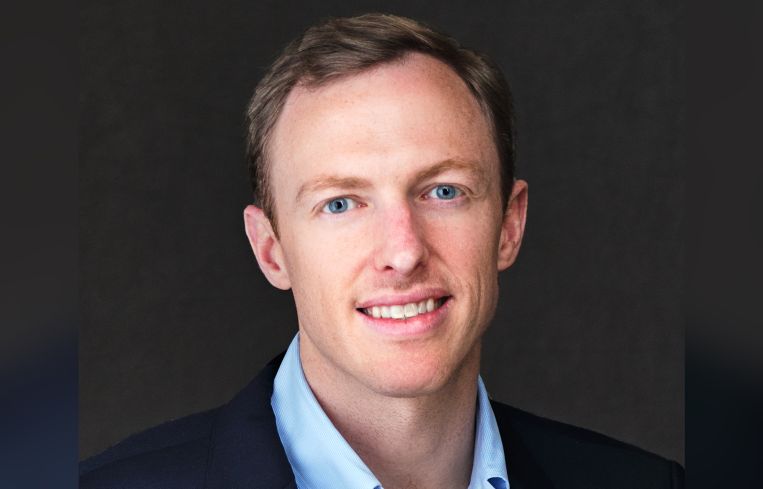Go-To Guy: How Carr Properties Chief Investment Officer Francis Lynch Invests in CRE
By Brian Pascus June 30, 2025 6:30 am
reprints
Francis Lynch serves as chief investment officer at Carr Properties, a real estate investment trust that specializes in office and residential ownership and development in Austin, Boston and Washington, D.C. Lynch is responsible for acquisitions, dispositions, and joint ventures for the firm’s 10-building, 3.8 million-square-foot portfolio.
Carr’s status as a private REIT, owned largely by Alony Hetz Property & Investments (J.P. Morgan Management plans to exit its 35.5 percent stake), allows the firm to fund its investments mainly from an equity perspective. The firm often brings in equity partners such as Barings, which partnered with the firm on its redevelopment of 425 Montgomery, a 250,000-square-foot multifamily property in Northern Virginia, and Morgan Stanley Asset Management, which helped Carr acquire 100 Congress Street, a downtown office tower in Austin, Texas.
Lynch sat down with Commercial Observer to discuss his work and investment objectives.
This conversation has been edited for length and clarity.
Commercial Observer: What is Carr Properties’ main investment strategy?
Francis Lynch: The current and go-forward strategy is as follows: Today, we’re seeing a huge opportunity resulting from the huge dislocation occurring in office, and we’re taking a barbell approach. First we’re looking at existing office and finding buildings we can take from good to great — buildings that are almost trophy — and working on the quality tier of premium-plus. The other side of the barbell is acquiring office that’s economically or functionally obsolete and either repurposing or redeveloping it into residential or something else.
We just broke ground on an apartment project in Old Town Alexandria, Va., called 425 Montgomery, which is a perfect example of the second tranche. We acquired it in January 2024 as an office building, and brought in as a construction lender and a JV partner in February of this year, and just knocked it down and commenced construction. [The project will deliver 234 residential units, including affordable housing units, upon completion.]
How did Carr Properties navigate the challenges in the office sector that began in 2020?
We stayed steady and disciplined. We had major transactions that closed in March of 2020, and we completed those transactions and kept our eye on the ball in terms of asset management, making sure that tenants were paying rent and we were operating buildings appropriately. We actually had a lot of transaction activity during COVID during acquisitions and disposition. So the first phase of COVID had a huge quick impact on capital markets and it caused this work-from-home trend, but during that time interest rates were incredibly low, so from a capital markets standpoint the office market was somewhat protected, it was cash-flowing, and borrowing costs were low. When it became clear to the Fed that inflation was occurring [beginning in 2022], rates increased significantly, both at the short and long end of the curve, and that’s when office started having challenges. There was less debt available and office values declined significantly but, luckily for us, we entered the pandemic and rate cycle with relatively low leverage — we were at around 40 percent on a loan-to-value basis on our overall portfolio, so we didn’t have as many challenging situations with lenders.
How did your firm specifically ensure you didn’t get burned by the office repositioning across different U.S. markets?
We’ve viewed the dislocation in the office sector not as a retreat, but as a rare opportunity to invest strategically with discipline and long-term conviction. At Carr, our investment strategy has always included the combination of great buildings in great locations, and we’ve stayed steady in our strategy — focusing on high-quality assets or development projects that we can elevate through design, customer service and operational excellence.
Our investment thesis has evolved to meet today’s market realities, so we’re focused on two core strategies: acquiring good existing buildings that we can make great, and targeting obsolete assets that can be repurposed — often into residential. It’s all about value creation. A great example of this is our repositioning of 100 Congress in Austin, Texas. We acquired the building in 2021, marking our entry into that fast-growing market, and saw an opportunity to transform a solid Class A office asset into something truly exceptional.
Since completing the repositioning, we’ve signed seven deals totaling 35,000 square feet, with strong demand driven by both new customers and expansions from existing ones. That success reinforces our belief that organizations are willing to pay for quality, and we’re delivering on those expectations.
You’re a big player and investor in the D.C. office market. How do you anticipate that market evolving in the years to come?
The federal government is a key demand driver in D.C., so any slowdown in GSA leasing activity impacts the city. That said, we focus on a segment of the market that has remained resilient: trophy-class office. While the broader D.C. office market has a 22 percent vacancy rate, vacancy in the trophy segment is around 11.5 percent, and leasing demand has remained strong.
We’ve doubled down on quality — designing and operating buildings that stand out, even in a crowded or uncertain market. A great example of this is Midtown Center, which has seen tremendous interest in the past year with major leases with renowned law firms — ArentFox Schiff for 120,000 square feet and Freshfields for 117,000 square feet — showcasing the ongoing strength and appeal of exceptional trophy office properties. We expect D.C.’s office landscape to continue bifurcating: obsolete buildings will struggle, while well-located, trophy properties will outperform. That sweet spot is where Carr plays. We stay ahead of what our customers want and deliver buildings that align with how people work today.
You’re also active in Austin. What are the risks and what are the rewards there?
We entered office in 2021 for a similar reason we entered Boston: It’s a knowledge-based economy with significant long-term growth with population and office-using employment. We were focused on office in Austin when we expanded with the acquisition of 100 Congress, which is an example of a building we repositioned into the premium-plus category. Going forward, we’re interested in both office and multifamily in the Austin market. [As for the risks in Austin], there’s been a lot of development both in office and residential which created a huge amount of supply in both segments, and in the short term that’s creating oversupply. But in the long term we think the demand drivers are strong there, so all that supply will be absorbed.
As a private REIT, are your calculations different from public REITs and other office investors and operators?
I think we’re different from public REITs in that we have more flexibility to take on development and more opportunistic investments. And then I think we’re different from some other private real estate investors in that we have more flexibility around the hold period, we’re more longer-term oriented.
But we’re a vertically integrated company: We have construction management in-house, property management in-house. Our development team has developed over 2.8 billion square feet in total projects over the years. We developed 2.3 million square feet of office and mixed-use during the tail end of COVID, so our team is well suited to address these opportunities, whether building brand new or renovating existing office.
We look at all the matrices — basis versus historical value, basis versus replacement costs, we look at in-place cash yields, and total returns based on prevailing capital markets and cap rate assumptions. In this environment, we spend a lot of time on next-buyer analysis, making sure the next buyer in office in particular has significant cash-flow yields.
Brian Pascus can be reached at bpascus@commercialobserver.com



